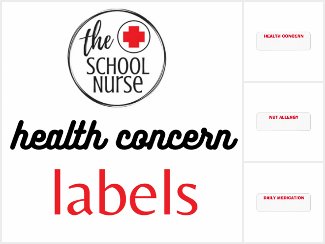Seizures in the School Setting:
Information for New School Nurses
.png)
"Epilepsy is not a rare disorder, 1 in 26 people will develop epilepsy during their lifetime. It can occur on its own or alongside other health conditions of the brain. What happens during a seizure may look different depending on who is experiencing them. However, seizures are usually stereotypic, which means the same things or behaviors tend to occur in a person each time they have a seizure."
Understanding Seizures and How They Affect Students
Students with seizure disorders may experience different types of seizures, from brief episodes to more complex situations. It’s important to recognize the signs and know how to provide support. When a seizure occurs, your calm, quick response will set the tone for the entire school community. Staff and students often mirror the school nurse’s reaction, so staying composed will help reassure everyone involved.
Know the Seizure Action Plan
General Seizure First Aid – Stay, Safe, Side
- Stay with the student and time the seizure.
- Safe – Keep the area clear of hazards.
- Side – If possible, turn them on their side for safety.
It’s also important to be aware of state-specific laws and policies that may impact how schools manage seizure disorders. For example, in Illinois, the Seizure Smart School Act requires schools to have Seizure Action Plans for students with epilepsy. It also mandates that schools designate "Delegated Care Aides" who are trained to assist in implementing these plans, ensuring that students receive the appropriate care and support they need during a seizure. Be sure to review your state’s specific laws to ensure compliance and best practices.
Saving Your Time by Using Available Resources
When educating staff, there's no need to reinvent the wheel. Many districts already have seizure protocols in place. You can also use reliable online resources to save time while ensuring your school staff is well-prepared. Here are a few helpful options:
-
The School Nurse on Teachers Pay Teachers: Offers a set of "Teacher Tips" for educating staff on various seizure diagnoses.
-
The Epilepsy Foundation: Provides a FREE Seizure Action Plan template, nurse (with CEs) & school staff trainings and other super useful tools.
-
NASN (National Association of School Nurses): Offers resources specifically designed to help school nurses manage students with epilepsy.
By using these resources, you’ll ensure staff are informed and prepared to support students with seizures in a timely and effective way.
Here’s a brief list of ways school nurses can support students with a seizure disorder at school:
-
Collect and Maintain Seizure Action Plans (SAPs): Make sure every student with a seizure disorder has a customized Seizure Action Plan, and that it’s reviewed regularly.
-
Train School Staff: Provide training to teachers, aides, and other school personnel on how to recognize seizures and perform seizure first aid.
-
Monitor Medication and Health Needs: Track any medication schedules and ensure the student receives the necessary treatments or interventions during school hours.
-
Educate Students: Help the student understand their condition and what they can do to stay safe at school, empowering them with knowledge about their seizures.
-
Foster a Supportive Environment: Encourage a school culture that is informed and empathetic to the needs of students with epilepsy, reducing stigma and promoting inclusion.
-
Ensure Emergency Readiness: Be prepared with emergency protocols for seizure-related crises, ensuring that all staff know when to call for emergency medical help.
-
Collaborate with Parents and Medical Teams: Maintain open communication with families and healthcare providers to ensure the school is meeting the student’s medical needs.
Closing Thoughts
As a school nurse, you're an essential part of your school’s ability to respond to medical emergencies. By staying calm, educating staff, and using available resources, you help create a safer, more informed school environment for students with seizure disorders. Additionally, providing emotional support and fostering a sense of security for the student can make a significant difference in their school experience. Your proactive approach can make all the difference in how a seizure is handled and how students are supported both medically and emotionally.



.png)


.png)



.png)

.png)
No comments:
Post a Comment